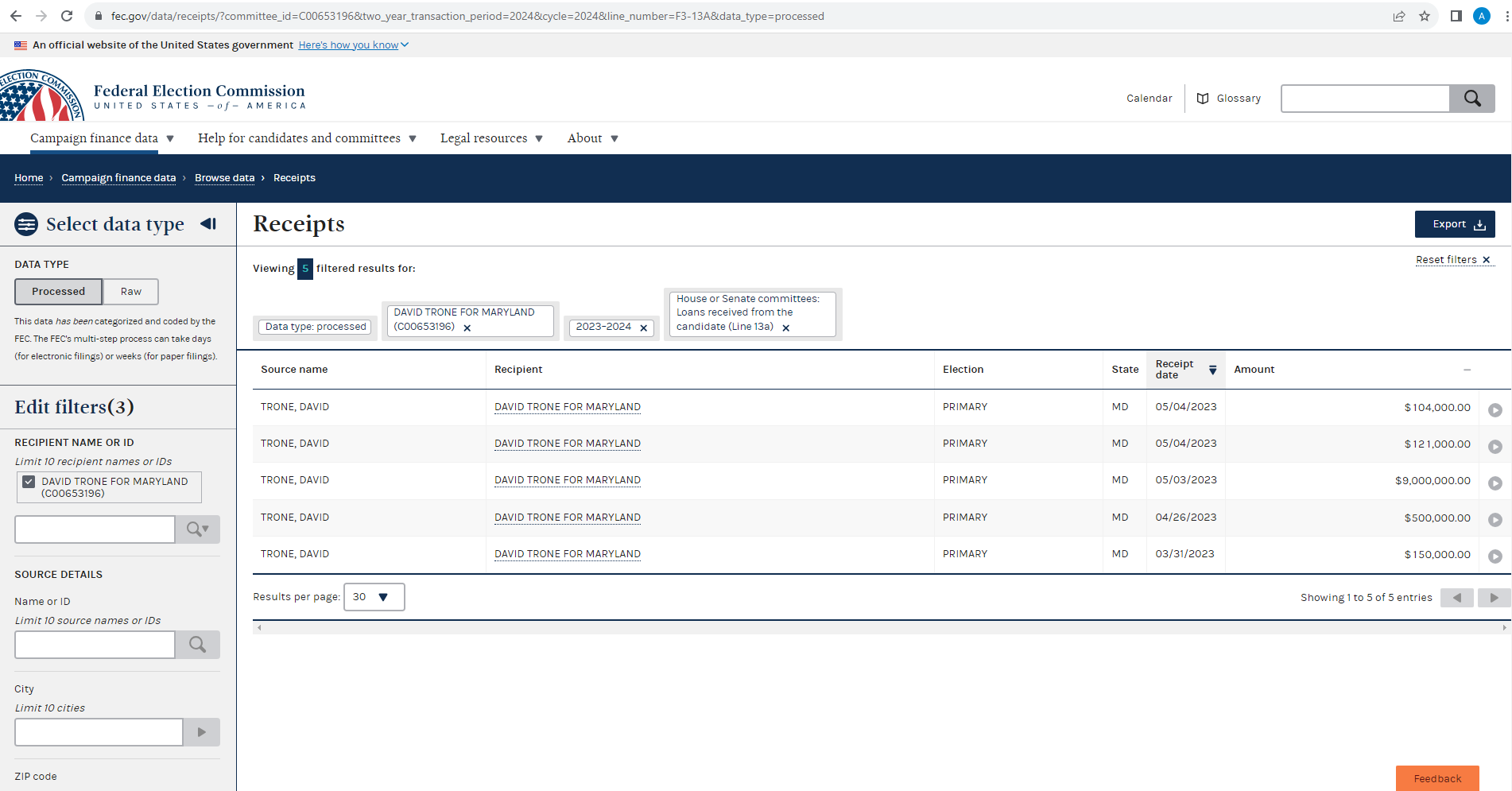By Adam Pagnucco.
Have you ever been to a Total Wine store? If not, it’s an experience. It’s like a trip to Booze Disneyland. Get ready to fill a shopping cart with bottles, and if you bring a friend, you can fill two. These are the biggest, baddest alcohol stores in America.
This tells you something about Congressman David Trone, who is now running for U.S. Senate. He goes big or not at all.
Just consider how he started this campaign. Right out of the gate, he sent two mailers. His social and digital are constant. All of this has been anchored by $9.9 million in self-funding with tens of millions more to follow.

The Federal Election Commission shows almost $10 million in Trone self funding through June.
Trone’s largest initial commitment was to TV. Records from the Federal Communications Commission (FCC) and the Federal Election Commission (FEC) show that he spent $2 million on gross TV buys in May and June. (That doesn’t include production costs.) Of that amount, $1,355,725 was spent on Baltimore area broadcast TV, $491,808 was spent on Baltimore area cable and $158,045 was spent on Western Maryland cable. There could be a little more as FCC records are challenging to assemble.
One of Trone’s early TV ads.
Let’s put this into context. Trone’s TV buys a year out from the primary were more than all the money that Prince George’s County Executive Angela Alsobrooks raised through June ($1.7 million) and almost four times what Montgomery County Council Member Will Jawando has raised ($526,026). Here is the stat of the day: Trone’s early TV spending slightly exceeded MoCo Executive candidate David Blair’s TV spending for the entire 2022 primary. (I worked for Blair’s campaign.)
That’s not all. A casual perusing of his spending reveals $758,098 spent on digital, $399,270 spent on mail, $230,667 spent on payroll and payroll taxes, $104,000 spent on polls and hundreds of thousands of dollars spent on consultants. These could be underestimates depending on the itemization in his reports. So far, he has spent almost $5 million in total.
Another Trone ad. Everyone who has had tragedy in their life can relate to this message.
Most campaigns take a while to build to this level of activity. That’s because candidates have to fundraise for months before they can afford TV, mail and digital. Trone doesn’t have that problem. He can run hard right out of the box.
Here is something I learned from working on Blair’s campaign. In-person campaign events are good things. Campaign staff are necessary and the best of them are real assets. But by themselves, these kinds of events and staffing don’t move poll numbers. Mail and TV do. In our race, County Executive Marc Elrich, the incumbent, started out with a big lead and it only started to shrink when we went heavy into mailboxes and TV sets.
At this moment, Trone has a luxury that Alsobrooks and Jawando don’t have. Any time he wants, he can call his TV guys and mail house and get the numbers to move, even if just a little bit. His challenge is targeting. Who does he communicate with and what does he say? That’s what his consultants get paid to figure out. Alsobrooks and Jawando will have to do that too, but their ability to function at a high level is months away. They still need to raise the money to compete. Trone does not.
I’m not saying that Trone is guaranteed to win. Alsobrooks has real assets that Trone lacks, such as establishment support, experience in leading the state’s most heavily Democratic jurisdiction, lots of free media during the COVID era and support among Black Democrats (which she might have to split with Jawando). But Trone’s first strike shows his greatest strength – the ability to exploit his playing field by steamrolling his opponents.
That is how he built Total Wine. And that’s how he is running for U.S. Senate.
